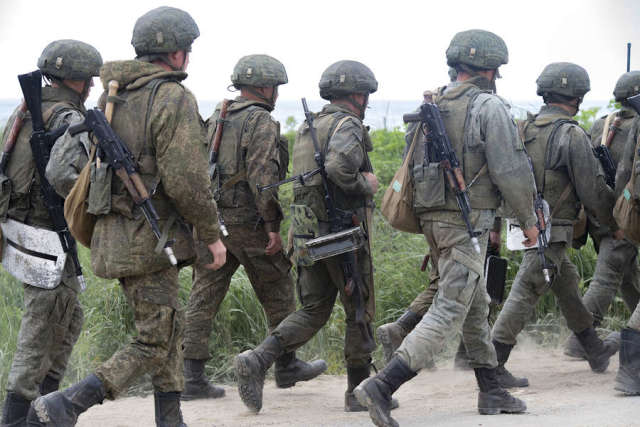Experts explained the meaning of the training shooting of the Armed Forces of the Russian Federation in the Kuriles
More than a thousand servicemen of the Eastern Military District (VVO) are conducting training firing from artillery guns and anti-tank missile systems on the Kuril Islands, the Russian Defense Ministry reported. "Newspaper.Ru" figured out why Russia is conducting exercises in the Kuril Islands right now.
According to the military department, about 200 units of military and special equipment are involved in the exercises. The Ministry of Defense noted that training with servicemen of the machine-gun and artillery unit of the army corps of the Air Defense Forces will be held at the Lagunnoye and Gorny Klyuchi ranges.
"During the training, the gunners on the Kuril Islands will have to conduct training on the implementation of standards as part of batteries and calculations for preparing for firing, changing firing positions, conducting reconnaissance," the Defense Ministry said.
It is planned to use Orlan-10 and Aileron-3 drones to adjust artillery fire.
Earlier it was reported that Russian military units located on the Kuril Islands received T-80BV gas turbine tanks. "A batch of modern modernized T-80BV tanks has entered service with military units stationed on the Kuril Islands. A distinctive feature of the T-80 family of tanks is a single gas turbine power plant, for which it was called a "flying" tank," the press service said.
The exercises are taking place against the backdrop of sharply strained relations between Moscow and Tokyo. At the end of March, the Russian Foreign Ministry said that because of the sanctions imposed against the country, negotiations with Japan on concluding a peace treaty no longer make sense.
- I told the newspaper.Ru" political scientist Konstantin Sokolov.
According to military expert Viktor Litovkin, the exercises are "exclusively defensive in nature." "Russian servicemen are firing on the Kuril Ridge, near the Sea of Okhotsk. They are preparing to repel the attack if necessary," Litovkin said.
He noted that Japan considers the Southern Kuriles, except for the island of Urup, its own. We are talking about the islands of Iturup, Kunashir, Shikotan and the Habomai island group.
"Japan lost these islands as a result of the Second World War, where it was the aggressor, so it has to accept that these islands belong to Russia, especially since it was fixed in the San Francisco Peace Treaty of 1951. This is Russian territory, which means our army is there. And where there is a Russian army, there are exercises. This is normal, there is no need to worry," Litovkin said.
At the same time, the expert added that the exercises are taking place "not from scratch and not without reason" and now Japan is "actively increasing its military potential."
Valery Kistanov, Head of the Center for Japanese Studies at the Institute of the Far East of the Russian Academy of Sciences, agrees with this assessment.
"Japan is engaged in strengthening the military alliance with the United States, with which it has concluded a security agreement. This course was steadily pursued throughout the entire post-war period. But it became especially noticeable during the reign of Prime Minister Shinzo Abe in Japan, from 2012 to 2019. He strengthened the course for the purchase of American weapons. In fact, Japanese forces are armed with modern American weapons, especially in missile defense. Under Abe, Japan's military spending grew steadily, now it exceeds $50 billion a year. Despite the fact that Japan officially does not have an army. Its armed forces are officially called the defense forces," Kistanov said "Газете.Ru ".
He recalled that Abe advocated rewriting the constitution of Japan and legitimizing the existence of the army.
"Japan does not have ballistic missiles and atomic weapons. But offensive weapons are also emerging - Japan recently built two helicopter carriers and converted them into aircraft carriers. Their fleet consists of US F-35 fighters. Japan is also strengthening its defense potential in the field of missile defense.
- noted Kistanov.
Irina Alshayeva

